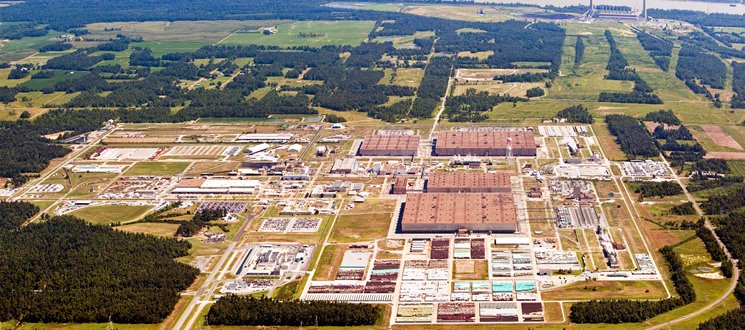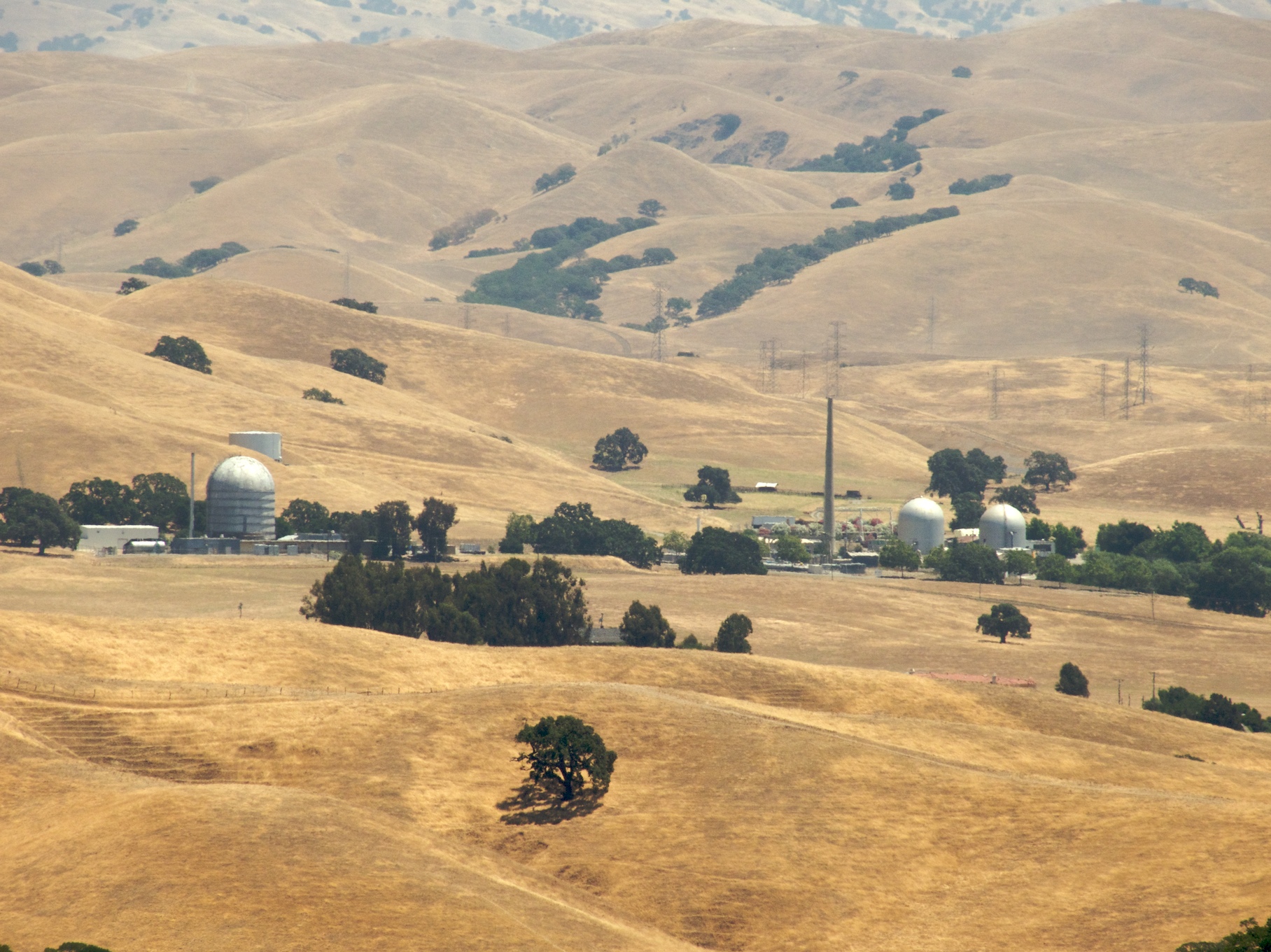The Holtec HI-LIFT at Indian Point-3. (Image: Holtec)
Holtec International has said its patented HI-LIFT crane technology, being installed at the Indian Point-3 nuclear power plant, will speed the defueling of the spent nuclear fuel pool and avoid millions in excess decommissioning costs.
This image of the PUREX plant was used to demonstrate how a 3D laser scanning tool could capture the layout of facilities being prepared for demolition. (Image: DOE)
A team of designers from Central Plateau Cleanup Company (CPCCo), a contractor of the DOE-EM Richland Operations Office, is using 3D laser scanning technology to gather data to help workers prepare some of the facilities at the Hanford Site for demolition.
UCOR president and CEO Ken Rueter (left) and Tennessee Tech president Phil Oldham have signed a memorandum of understanding formalizing a new partnership on workforce development supporting cleanup at the Oak Ridge Reservation. (Photo: TTU)
United Cleanup Oak Ridge (UCOR), the Department of Energy’s lead environmental cleanup contractor at the Oak Ridge Reservation in Tennessee, has formed a new partnership with Tennessee Tech University focused on building a pipeline of highly skilled workers for cleanup work at the site. Working with UCOR, the university’s College of Engineering is to launch a new nuclear engineering degree program beginning in fall 2024.
The Paducah site. (Photo: DOE)
The Department of Energy’s Office of Environmental Management has awarded a $2 million grant to the Paducah Area Chamber of Commerce for its work in considering the possible future uses of the Paducah Gaseous Diffusion Plant site in Kentucky. The project will consist of site mapping, community studies, data analysis, and development of recommended strategies.
Hanford’s Waste Treatment and Immobilization Plant. (Photo: DOE)
A pair of recent reports by the U.S. Government Accountability Office and the National Academies of Science, Engineering, and Medicine highlight some of the challenges the Department of Energy faces in treating the millions of gallons of legacy radioactive waste at the Hanford Site in Washington state.
Jared Wicker of SRNS explains how different technologies are used to monitor the environment at SRS. (Photo: DOE)
Claflin University students recently toured the Department of Energy’s Savannah River Site in South Carolina to learn about the facilities and occupations there.
DOE-EM’s Greg Sosson (standing) views Integrated Waste Treatment activity during the facility’s first day of radiological operations. (Photo: DOE)
After initial runs using a mix of radiological waste and nonradioactive simulant, the Integrated Waste Treatment Unit (IWTU) at the Idaho National Laboratory site has progressed to treating sodium-bearing waste entirely, the Department of Energy’s Office of Environmental Management (DOE-EM) announced on May 22.
The NWMO’s Laurie Swami (left) and the DOE’s Kathryn Huff sign a statement of intent to cooperate on used nuclear fuel management in Washington, D.C., on May 16. (Photo: CNW Group/NWMO)
The United States and Canada will cooperate on spent nuclear fuel management under a statement of intent (SOI) signed between the U.S. Department of Energy and the Nuclear Waste Management Organization, the nonprofit responsible for the management of Canada’s commercial spent fuel.
For the first time in 26 years, work crews performed sampling of gaseous byproducts at the MSRE. (Photo: DOE)
The Vallecitos Nuclear Center in northern California. (Photo: Wikimedia Commons)
GE Hitachi Nuclear Energy announced May 9 that it intends to transfer ownership of the 1,600-acre GEH Vallecitos Nuclear Center to NorthStar Group Services for nuclear decontamination, decommissioning, and environmental site restoration.
A rendering of Holtec’s proposed HI-STORE CISF in New Mexico. (Image: Holtec)
The Nuclear Regulatory Commission has issued a license to Holtec International to construct and operate a consolidated interim storage facility (CISF) for spent nuclear fuel in southeastern New Mexico. Holtec is proposing building the facility, called the HI-STORE CISF, between the cities of Carlsbad and Hobbs in Lea County on land provided by the Eddy Lea Energy Alliance (ELEA).
Crews recently replaced a motor in a crane at the SRS H Canyon for the first time in the facility’s 70-year history. (Photo: DOE)
Work crews at the Department of Energy’s Savannah River Site in South Carolina recently replaced a motor on a crane in the 70-year-old H Canyon Chemical Separations Facility. H Canyon is the only production-scale, radiologically shielded chemical separations plant in operation in the United States.




 Atomic Energy of Canada Limited (AECL), Canadian Nuclear Laboratories (CNL), and the Algonquins of Pikwakanagan First Nation (AOPFN) have signed a long-term relationship agreement that aims to foster mutual respect, collaboration, and economic opportunities between Canada’s indigenous communities and the nuclear industry.
Atomic Energy of Canada Limited (AECL), Canadian Nuclear Laboratories (CNL), and the Algonquins of Pikwakanagan First Nation (AOPFN) have signed a long-term relationship agreement that aims to foster mutual respect, collaboration, and economic opportunities between Canada’s indigenous communities and the nuclear industry.










